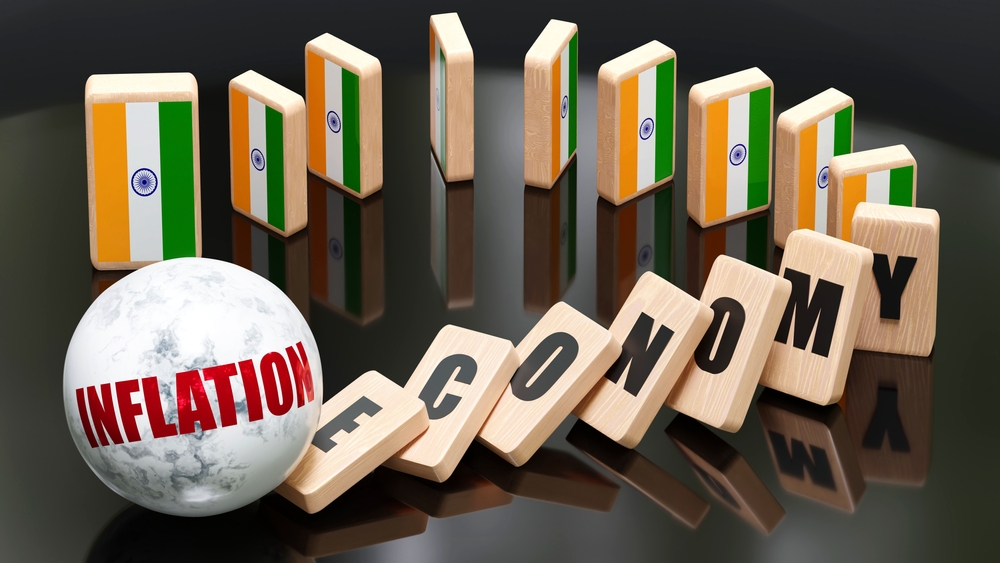Inflation Rears its Head...Indian Equity Markets and the New Equilibrium
Inflation is a cornerstone of modern economic policy, the key indicator for growth: instilled as it is with a unique moral content all of its own, inflation is now the prime catalyst for how and when global economic change will happen. Too much and the real time value of investment assets falls, but too little and there might be no investment at all: put simply, if I know that the market value of what I manufacture will rise by 3% next year (that’s what inflation is), I’ll probably invest in new machinery to take advantage of the windfall. But if prices are set to stay the same (in other words, no inflation), I’ll probably stick with what I have. That’s why Keynes was right when he said “inflation is unjust, but deflation is inexpedient...it is worse in an impoverished world to provoke unemployment than to disappoint the rentier” (by which he meant the investor in fixed assets: who talks about rentiers these days…but there again, what would Keynes have made of blogging?) Anyway he was right…inflation does have a moral content, it is crucially important for growth.
And it’s precisely because modern governments have an obligation to promote growth and stimulate employment that all (well almost all, obviously I’m not talking about Venezuela here)…all Central Banks set a target for inflation around which monetary policy turns. Nobody plans for zero inflation, because zero inflation means zero investment. At the moment the Reserve Bank of India has a five-year inflation target of 2% to 6%, the Federal Reserve has plumped for an annual 2%, and the Bank of England (showing a lack of imagination, but in keeping with the new “indestructible relationship” that came out of Carbis Bay), has also gone for 2%. So a pattern emerges: anything less than 2% won’t do for sustainable growth…but something above 2% will harm the real time (short term) value of investment assets. The way to manage that delicate balance is to raise (or reduce) interest rates…
And that is having powerful impact on the flow of international capital.
Carry Trade and Inward Investment
It's where “carry trade” comes in: borrowing in countries with low interest rates, and then investing it in those countries where rates are higher: the spread between the two is the currency investor’s profit. But given this necessary global focus on inflation, that means money will tend to flow into economies that have higher than target inflation rates, because, put simply again, central policy planners in those countries blessed with inflation will tend to have higher than average interest rates.
So, it’s worthwhile asking yourself, if inflation is so important (which it is): what is inflation actually doing at the moment, and how is that affecting the shifting tide of international capital?
The New Equilibrium
Well, in the United States inflation rose to 5% last month, but the Dow Jones index also suffered its biggest single day fall since February, dropping by 1.5% on fears the economy was running too hot (3% above target to be precise): so the Fed’s short-term response was to hold interest rates at 0%. The US remains, then, a country to borrow from. In the UK inflation rose to 1.5% in April (from 0.7% the previous month: hardly surprising given a progressive easing of local lockdown restrictions): and the FTSE 100 index has since risen by nearly 200 points, but an equally cautious MPC kept interest rates at 0.1%. Another country to borrow from then…but in India inflation rose to 6.3% in May (the highest for six months): the Reserve Bank now projects an average of 5.1% over the rest of the financial year (well within its upper target: www.rbi.org.in), and has pegged interest rates at 4%.
Just think about that for a moment: you can borrow for nothing in the US, for next to nothing in the UK, and then invest with a 4% return in India…so a new equilibrium emerges, through a process of continuous arbitrage: interest rates rise (or fall) in response to inflationary (or deflationary) pressures, and bond yields start to move in lock step with stock prices: the BSE SENSEX index has risen from 49,580.73 to 52,819.63 over the course of the last month. GDP won’t grow if inflation is low, and right now Indian Markets are benefitting from a perfect dynamic between interest rates and long-term inflationary trends.
After all, there’s no inflation in a junkyard…it’s all about the new equilibrium.
Mainstream Impact Investment is the leading model for future investment strategies across the globe: recognising, as it does, that robust and compliant businesses are better placed for long-term success in our changing world. And that’s the model Red Ribbon Asset Management (www.redribbon.co) has adopted for more than a decade: securing higher than average rate investor returns, and looking after the planet in the process.
Executive Overview
It's hardly surprising inflation has started to rise as lockdown restrictions ease, but the delicate interplay between inflation and interest rates has always been a key focal point for any progressive investment strategy. And right now that is especially interesting in India…
Invest in Red Ribbon Asset Management
Red Ribbon is committed to identifying and building on investment opportunities that are fully in compliance with its core Planet, People, Profit policy: not only offering above market rate returns for investors but also protecting our Natural Capital.








Leave a Reply